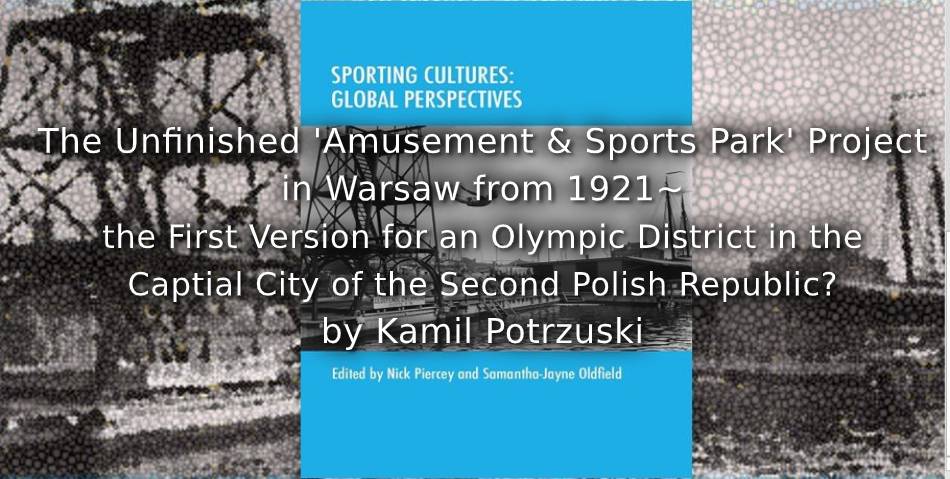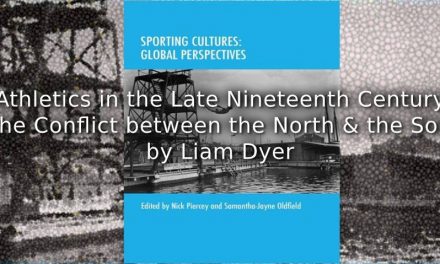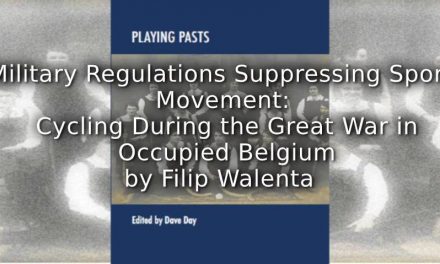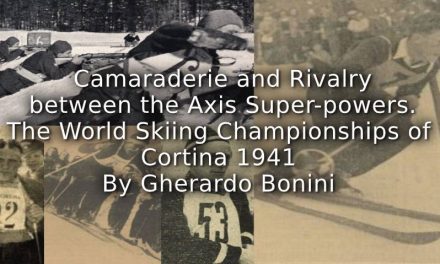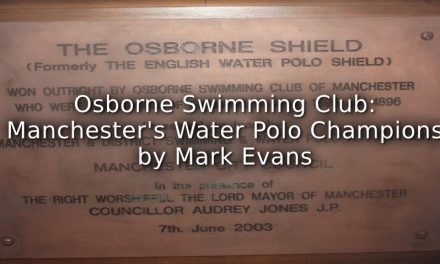Please cite this article as:
Potrzuski, K. The Unfinished ‘Amusement and Sports Park’ Project in Warsaw from 1921 – the First Vision for an Olympic District in the Capital City of the Second Polish Republic?, In Piercey, N. and Oldfield, S.J. (ed), Sporting Cultures: Global Perspectives (Manchester: MMU Sport and Leisure History, 2019), 69-83.
ISBN paperback 978-1-910029-49-7
Chapter 4
______________________________________________________________
The Unfinished ‘Amusement and Sports Park’ Project in Warsaw from 1921 – the First Vision for an Olympic District in the Capital City of the Second Polish Republic?
Kamil Potrzuski
______________________________________________________________
Introduction
For a couple of months in 1997 the Warsaw public got excited about the news that pop-star Michael Jackson was planning a huge investment in Warsaw. The musician, who gave his only concert in Poland at the Bemowo airport in the North-West part of the city in the preceding year, was so impressed by the warm welcome he received in Poland that he desired to build a large family entertainment theme park. Among the potential locations considered were Powsin (a southern part of the city), Kępa Potocka (vast green areas near the central Śródmieście district) and particularly the Bemowo Airport (were the concert had taken place). Jackson promised to give his own money to the project and to assist in finding more investors. Preliminary plans were drawn up for the park, which was supposed to be inspired by the tradition of Polish folk tales and legends. Unfortunately, ownership issues interfered with the plans – the Bemowo Airport was under the administration of the Ministry of National Defence and the Ministry of Internal Affairs and Administration, and they did not agree to transfer the ownership of the area to the city. This stopped the investment and caused Jackson to abandon the idea. After several years, Marcin Święcicki, who was the Mayor of Warsaw at that time, mentioned that the reasons behind the government’s resistance were political. According to a former politician of the centrist and liberal Unia Wolności (Freedom Union), the right-wing and conservative government party, Akcja Wyborcza „Solidarność” (“Solidarity” Electoral Action), did not want to allow a spectacular success for the local Warsaw authorities, headed by Unia Wolności in coalition with the opposition left-wing liberal Sojusz Lewicy Demokratycznej (Democratic Left Alliance), a party of post-communist origin. [1] Relevant documents have not yet been made available to researchers, so it is difficult to confirm the opinion of the former mayor. The amusement park project turned out to be only a short-lived media sensation and today it is less and less frequently mentioned as an anecdote from the capital city’s recent history.
Jackson’s project was not the only idea for building a huge amusement park in Warsaw. A forgotten episode from Warsaw’s history is the unfinished 1921 Amusement and Sports Park investment project. The concept for a huge, multipurpose sports park on the East bank of Vistula was just as bold and similarly short-lived as its counterpart from the 1990s. This chapter will analyse the origins and development of this concept. The concept seems a very interesting and particularly ambitious sports investment project for the Warsaw of the 1920s. Its magnitude and the number and standard of the sports facilities envisaged in the park must have felt impressive. Had it been completed, the project could have become the potential Olympic District of Warsaw and hosted the Olympics, e.g. in the 1930s. It seems, however, that considering the economic capacity of the reborn Second Polish Republic, as well as the political situation domestically and internationally in the 1920s, the project was beyond the investment capacity of both the municipal and national governments.
The sources used in this chapter to reconstruct the concept of Warsaw’s sporting park next to the Vistula, were mostly Polish newspaper articles from 1921, as practically no documentary evidence of the project remains in the Warsaw archives. There are also only few remaining visualisations of the Amusement Park – one of them is presented in this chapter. The exiguous number of sources relating to the sporting complex leads to the conclusion that it only existed as a general idea and a short-lived press fact, which was never truly considered a realistic possibility. Nevertheless, such a concept tells us a lot about the reality of the sporting movement in early interwar Warsaw and is, therefore, worth analysing.
The people behind the ‘Amusement and Sports Park’ idea
The idea for an ‘Amusement and Sports Park’ in Praski Park came in 1921 from colonel Marian Dienstl-Dąbrowa, a First World War veteran who spent some years in Russia as an Austro-Hungarian prisoner of war. Dienstl-Dąbrowa, a history of art graduate, had been known as a talented organiser – in 1917 he became the head of the Polish military mission to Italy, who recruited 37,000 volunteers to join Józef Haller’s so-called Blue Army. He was also a gifted journalist, cooperating with numerous popular Polish periodicals both during the Partitions and after 1918.[2] In 1921, during a series of meetings with Polish intellectuals, artists, journalists, financiers and American Poles, he presented plans for the redevelopment of the Praski Park.
The park, originally built in 1865 with permission of the Russian Tsar Alexander II, had already become one of the favourite recreation grounds for the people of Warsaw in the second half of the nineteenth century. It hosted fairs and folk parties, sobótki (St. John’s Eve festivals), summer swimming lessons, and, when flooded by the Vistula, even boat races. For a number of years it was also the seat of the Popular Theatre.[3] The potential of the park, which occupied a picturesque location near the central Śródmieście district, was, however, not fully utilized before Poland reclaimed independence, due, among other things, to poor transport infrastructure and low safety levels. Dienstl-Dąbrowa’s plan was an opportunity to create a high-quality urban space in the park.
The Colonel, realizing both the scarcity of recreation and sports grounds in Warsaw, which had been rapidly developing since the 1860s, and the serious neglect of the Vistula’s banks, mainly populated with factory facilities and railway areas, planned to build a ‘Sports and Amusement Park’ with all kinds of facilities that were modern at that time. The main reason for creating a popular park was, in Dąbrowa’s own words, ‘to draw the eyes and hearts of Warsaw towards the neglected Vistula banks, which deserve to look worthy of the capital city of Poland’ and ‘to take care of the future of our youth, who have no sport fields’. [4] Dienstl-Dąbrowa invited many influential political, military and cultural figures to join the Towarzystwo Budowy Ogrodu Zabaw i Sportów (Association for the Construction of the Amusement and Sports Park) created in 1921. Among them were the creator of Polish detachments in France during the First World War – General Józef Haller, founder of the popular Warsaw Polski Theatre – Arnold Szyfman, and the writer Kornel Makuszyński – author of the comic books about Koziołek Matołek (Matołek the Billy Goat), beloved by Polish children during the interwar period. The involvement of such important figures raised the status of the initiative.
The project’s designers
In 1921, the first arrangements were made with the municipality concerning the transfer of the title to the land. Dienstl-Dąbrowa managed to get the Warsaw-based architects – Czesław Przybylski and Antoni Jawornicki – involved in the design works. They had the most suitable experience for this type of enterprise. Przybylski, educated in Warsaw, Paris and Karlsruhe, was the designer of the Military Housing Fund’s Warsaw building on the prestigious Krakowskie Przedmieście Street in the city and the Dworzec Główny central train station. He focused on monumental architecture and chaired the Monumental Architecture Department at the Warsaw University of Technology until his death in 1936. [5] Jawornicki, a graduate of prestigious schools of architecture in Warsaw and Paris, also focused on designing large urban complexes and his experience within this area was even greater than that of Czesław Przybylski. He is considered one of the creators of the idea behind the suburban ‘garden city’ of Podkowa Leśna near Warsaw, commonly recognised as the best example of the implementation of Ebenezer Howard’s idea in Poland.[6] Jawornicki also designed the spatial plan for Żoliborz – a modern, comfortable and functional working class district in northern Warsaw, constructed on the initiative of the Polska Partia Socjalistyczna (Polish Socialist Party’s) activists. [7] Later, he also headed the extension of the Saxon Square and St. Florian’s Square – two of the largest urban squares in Warsaw. Towards the end of the inter-war period, Jawornicki headed the Biuro Regulacji i Pomiarów m. st. Warszawy (Office for Standards and Measurements of the Capital City of Warsaw). He also accepted commissions for sports and recreational projects, the largest of which was the Polish YMCA building in Konopnicka Street in central Warsaw, which was completed in the early 1930s. [8]
Project background
Jawornicki and Przybylski designed a concert, sports and amusement park with an area of almost 1 km2, theoretically capable of hosting 100,000 people at once. It was located on the Eastern bank of Vistula River, with a view to the Old Town, between the Kierbedź Bridge (the oldest permanent bridge in Warsaw, built in 1864) and the later peripheral railway bridge (currently the Gdański Bridge). The general plans for the complex have survived until today. Its key element was supposed to be a huge ‘stadium for sports matches and games with an amphitheatre’ for 40,000 spectators.[9] It was intended to host all of the major national sports games, as well as entertainment and recreational events, such as ‘St. John’s fairs and bonfires, Passion Plays, [and] Venetian nights’ and to ‘receive a huge number of spectators to watch the Polish Olympic Games or magical images on water in colourful floodlight flames’[10]
Another element of the complex was supposed to be a covered entertainment and sports hall, able to provide room for several thousand spectators, to be used by sportsmen for winter training, but mostly for boxing, wrestling and similar matches. Czerwiński reported that ‘[i]n the vicinity of the “large sports hall” there will be sports fields and sports grounds’ and the hall was to be complemented with a nearby building for sports clubs and associations.[11]
Another monumental building in the sports complex was supposed to be a concrete swimming pool with a 60-meter-long heated pool, and sanitation infrastructure, showers, locker rooms and steam baths. The sports park was also to include a hippodrome. The facilities were to be used by professional sportsmen, by youths in training but also by older and more staid citizens of Warsaw, who would ‘stretch their tormented bodies, straighten their backs from sitting slouched at the desk, [and] take full breaths of air into their hollow chests’.[12]
The planned infrastructure was intended not only for sports, but also for leisure, recreational and cultural purposes. This was connected with the park’s objective, which was ‘to give to the people of Warsaw, for a low price, intellectual entertainment (music, theatre and cinematograph) and physical exercise (swimming, sports and dance)’.[13] Directly on the Vistula’s flood bank there was a concert hall planned for ‘only’ 7000 listeners, with an orchestra platform and stage suited for various shows; its balconies and terraces were to allow the audience to enjoy the sounds of classical music performed by a symphony orchestra. The same building was supposed to host a casino and a spacious library with a reading room. At the site of the former popular theatre with an eclectic repertoire, the authors of the project proposed to build an elegant Teatr Farsy i Komedii (Farce and Comedy Theatre). One of the park’s corners was supposed to include a playground for children (a so-called ‘Jordan’s garden’, based on similar gardens based on a British model of physical education established about 1890 in Krakow by Henryk Jordan)[14] and a puppet-show[15].
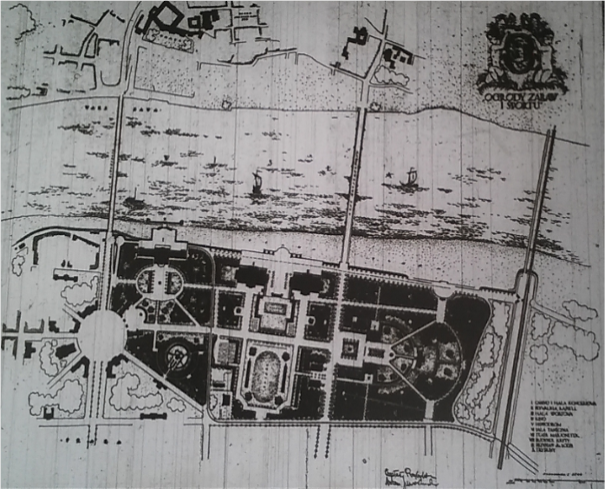
Figure 1. Amusement and Sports Park on the Praga bank of Vistula with the Old Town visible on the opposite bank.[16]
The huge sports and recreation park was meant for members of the elites, the upper class and aristocracy, desiring high culture, and for the masses of poorer and less culturally developed Varsovians, who needed simpler, almost trashy entertainment. It was also designed with sportsmen in mind, to allow them to train in what would be the most modern facilities not only in the city, but also in the country, and to participate in games watched by a great number of spectators. Dienstl-Dąbrowa’s dream was to create a large ground offering the people of Warsaw not only sports, recreation, entertainment and culture, but also an opportunity for interactions between various social strata. To make the park more accessible, its designer also planned to build its own transport network: not only buses and trams using the Kierbedź Bridge, but also boats and a cable railway.
The fate of the project
The project turned out to be a daydream. Even though the news about it had significant press coverage in 1921 Warsaw, one can hardly find any mentions of actual investments being made in the following years, despite the fact that initially the construction was to begin in August, and that by mid-1922 (optimistic estimates were May 1, 1922) it was to be completed. It has not been possible to find any construction cost estimates in the archives and it is not even certain if they were ever created. The only mention concerning the costs of the investment is a remark by the concept’s designer in an article published in Rzeczpospolita where he says that the investment costs will be 300 million Polish marks.[18] This amount seems highly undervalued considering that, in October 1921, the daily wages of an agricultural worker digging potatoes amounted to 300 marks, a shirt in Dzików near Tarnobrzeg (a provincial town in central Poland) cost 4,500 – 9,000 marks and laced shoes in Dzików cost 10,000 – 20,000 marks.[19]Any reliable study of the project’s financial aspects are also not possible due to the lack of sources, especially given the context of fluctuating value of the Polish mark in those times. Between 1921 and 1923, a budgetary deficit and the general financial weakness of the Polish Republic was noticeable, and this caused the Polish currency to be constantly subject to inflation, turning into hyperinflation in 1923. [20]
Perspectives on the project and its chances of completion in the context of interwar Warsaw’s sport infrastructure development
Both the results of comprehensive studies on the development of sports infrastructure in interwar Warsaw published in Polish literature and the research on large sports and entertainment complexes in the city definitely support the conclusion that the Amusement and Sports Park project had no chance to be completed. [21] The burden of the investment, in the early 1920s, could not have been borne either by private (including joint ventures) or state capital. Even if it received high priority from the national and regional government, its completion would have been highly doubtful. However, as sport was not considered as an important matter before 1926, it was impossible that national or regional authorities would make the venture a priority. It should be remembered, that the new-born Polish State had a significant number of different problems, which often eclipsed the question of lack of sporting facilities.
In 1918, Poland won back its independence after a period of 123 years when the Polish lands belonged to the state structures of the Russian Empire, the Kingdom of Prussia (the German Empire following 1871) and the Habsburg Monarchy. Rebuilding political independence forced both the authorities and society to take up intensive efforts to unite the provinces of the country, which used to be connected in economic, legal and political terms with the neighbouring powers. Solutions had to be found for very different matters. Matters as basic and at the same time so diverse as the need to replace all the various currencies used in the Polish lands with a single means of payment or the modernisation of railways to create a standardised gauge in contrast to the several different gauges used in the Polish lands before 1918. [22] An enormous challenge was posed by replacing three legal and administrative systems with a uniform Polish legislation. Unification processes progressed with great difficulty in the first half of the 1920s and the young state had to fight almost all of its neighbours to secure the shape of its borders, which was only finally concluded in 1923 when the Council of Ambassadors recognized the borders of the Polish Republic. Especially heavy fighting, posing a threat to Poland’s newly-recovered independence and with the potential to threaten the stability of Europe, occurred in the years 1919-1920 against the Bolshevik Red Army.[23] Economic strife related to the losses caused by the front lines passing through the young state’s territory on two occasions and the plundering of Polish resources by the Russian, Austrian and German forces was especially difficult. Another problem was the raging hyperinflation, quenched only with the socially difficult reforms introduced in 1924, by the government of Władysław Grabski.[24]
The enormous effort to economically and legally unify the Polish lands was not finished until the outbreak of World War Two. Strong regional differences were present in the Second Polish Republic, with the country clearly divided into the richer and better managed western and south-western part (sometimes referred to as Poland A) and the poorer central and eastern part. Those differences, despite the efforts of the governing parties, including especially Eugeniusz Kwiatkowski, who led the economic policy of the Second Polish Republic for many years, could not be resolved adequately before September 1, 1939.[25] A difficult and sometimes destabilizing problem for the country was the relationship of the Polish authorities to society, with approximately one third of the citizens being representatives of minorities.[26] Despite this, most Polish historians agree that the unification of the country during the interwar period was largely successful.[27] However, prices were high and the large number of obstacles to the functioning of the state also hindered the development of sports. In such a context, it is hard to believe that the realisation of the Amusement and Sports Park was ever possible.
Even single pieces of sports architecture envisaged in Przybylski and Jawornicki’s project could not be completed in the inter-war period, or they had to wait for many years to come to life. The oldest open-air concrete swimming pool in Warsaw, that of the Polish Swimmers’ Association in Łazienkowska Street, was opened in 1928, after many years of intermittent investment works and with significant assistance of the Państwowy Urząd Wychowania Fizycznego I Przysposobienia Wojskowego (National Office for Physical Education and Civil Defence Training). A year earlier, a wooden hippodrome was built in the Łazienki Park, becoming one of the popular sports venues of interwar Warsaw, hosting prestigious annual international hippic competitions, frequented by Marshal Józef Piłsudski and President Ignacy Mościcki. The construction of a prestigious soccer and track and field stadium, the Polish Army Stadium, was successfully completed in 1930, however it could only provide space for 25,000 spectators and was smaller than the one planned by Dienstl-Dąbrowa. Until 1939, only seven indoor swimming pools were built in Warsaw, all of which were smaller than full Olympic-size. The capital city did not see a covered entertainment and sports arena or an artificial ice rink opened before the outbreak of the Second World War. Placing all of those structures in one park exceeded the investment capacities of early 1920s Poland. The instability and lack of confidence in the Polish currency practically precluded large investments by American Poles, as hoped for by Dienstl-Dąbrowa. In 1922, the Colonel himself showed no interest in the project anymore, probably realizing its illusiveness. All those circumstances suggest that we should view the project more as the record of a dream rather than an actual objective. The scale and quality of the complex planned in Praski Park, in 1921, and the fact that the idea was abandoned even before any serious works started, bring to mind Michael Jackson’s family entertainment theme park.
It is hard not to conclude that the whole project could have been just an intellectual provocation supposed to draw attention to the necessity of urban planning in Warsaw, which had developed very chaotically under Russian rule, and to the need of expanding the natural, sports and recreational areas in the city. There is, however, no hard evidence to support this conclusion. It is also conceivable that the project was an effect of a wave of great enthusiasm, which Polish intellectuals felt after the country regained independence and their certainty that an imminent and rapid civilizational progress would happen in the Polish territory. Such hopes were viewed with a great dose of scepticism by the widely read and respected Polish writer Stefan Żeromski. He popularized the phrase ‘glass houses’ as a metaphor for ultra-modern investments that were, however, rarely successfully completed in Poland.[28] Dienstl-Dąbrowa’s Amusement and Sports Park was exactly one of such enterprises.
The further history of the Praski Park in the interwar period
A comprehensive development of the Praski Park has never occurred. In the interwar period, however, the area gradually became better and better suited as a recreation ground for the local people and as a tourist attraction. The idea of using the area strictly for sports purposes was not followed, but the recreational investment projects in both the Warsaw Zoological Garden (ZOO) and a funfair were completed by the end of the 1920s. The ZOO, in particular, became a favourite place of recreation for both locals and visitors. In the first year of its operation (until the end of February 1929), it was visited by 583,100 people.[29] Later, the number of visitors diminished, but the ZOO remained highly popular. In 1937, it had 341,700 visitors.[30] One can certainly say that the ZOO had become one of the major attractions of Warsaw. Its most famous animal was ‘Tuzinka’ (‘The Twelve’) – a female Indian Elephant, which was, at that time, only the world’s twelfth elephant born in a zoo. Unfortunately, ‘Tuzinka’ did not survive World War II. During the war, the manager of the Warsaw ZOO, Jan Żabiński, together with his wife Antonina and some co-operators, successfully hid a significant number of Polish Jews in the area of zoological garden and many of them managed to survive the Holocaust due to this help. Antonina and Jan Żabiński were later awarded the title of ‘Righteous Among The Nations’ by the Yad Vashem Institute in Jerusalem.[31] Despite significant devastation during World War II and the almost complete loss of its animals, the ZOO was restored and reopened and remains one of the most often visited attraction of Warsaw.
Almost one and a half years after the ZOO opened, in summer 1929, an amusement park (or ‘Luna-Park’) modelled after the Vienna Prater was created in the west of the Praski Park. This was the only element of Przybylski and Jawornicki’s 1921 plans brought to life. It cost a significant amount at that time – about one million zloty – and was probably the largest project of this type in Central and Eastern Europe. The funfair housed a rollercoaster, electric car races, hamster wheels, magic mirrors, a maze and other attractions. The experience of the park was enriched with facilities such as bicycle rentals or sweet-vending machines.[32] In 1937, a 28-meter parachute tower was made available to the public, however, after World War Two the ‘Luna-Park’ was not restored.
The further history of the Warsaw’s Olympic plans – an outline
As was stated previously, if realised, the ‘Amusement and Sports Park’ could have potentially been an area for the Summer Olympic Games in 1924, 1928 or in the 1930s, however, the idea of a massive sporting complex in the Praski Park quickly disappeared, overwhelmed by more urgent problems. Yet, the concept of organising the Olympic Games in Warsaw was never totally abandoned. In 1937, against the backdrop of a different domestic and international situation, a plenary session of the International Olympic Committee took place in Warsaw. When opening the session, the City Mayor at that time, Stefan Starzyński, expressed his hope that Warsaw would soon have the opportunity to host sportsmen from around the world during the Summer Olympic Games. The plans to build an Olympic District in the capital of the Second Polish Republic seemed coherent, advanced, and were treated by the city authorities as one of the priorities for the capital’s long-term development. Investment plans assumed that by the early 1950s an Olympic Park would be created in Siekierki, the, to-that-point, neglected district in the southwest part of the city. The park would include a sports stadium, a parade area – the so-called Sports Forum – a rowing course in still water and other minor establishments. A water taxi, as well as a proposed railway line and road was intended to connect it with the city centre. The international airport planned on the other Vistula bank and a road bridge, connecting it with the Olympic District, would provide convenient access for foreign guests. This area, with the prior approval of the International Olympic Committee, was intended to be the arena for the Summer Olympic Games in 1952 or 1956. Although the project would have been very expensive, it seems that if the local and state authorities had treated it as a priority, it may have been completed.[33] This initiative went well with a series of large-scale investment undertakings related to sports that were successfully completed in the capital of Poland during the interwar period. This time, there is evidence to assume that the project had enough expert and technological support to be completed. Moreover, the Summer Olympic Games would help to improve the international image of Poland, as had been the case with major sporting events that took place in the 1930s in fascist Italy and Nazi Germany. A propaganda campaign was launched, in order to accustom international public opinion to the vision of conducting the Olympics in Warsaw. In 1939, a board depicting the Siekierki complex was among the materials prepared by the City Planning Department for New York’s World Fair.[34] Perhaps, if it had not been for the outbreak of World War Two, one of the Summer Olympic Games in the 1950s could have taken place in the capital of Poland.
Despite the horrors of World War Two, the idea of Summer Olympic Games was still alive for some Polish architects. By 1945, Warsaw had been almost completely destroyed, in large part, by the 63-day-long street battle between Polish resistance forces (mainly the Home Army, which reported to the Polish Government in Exile) and the Nazi occupation forces, also known as the ‘Warsaw Uprising’ or ‘Uprising 44’.[35] Shortly after the fall of the uprising, the Nazis, carrying out Heinrich Himmler’s command, started systematically destroying the urban tissue of the Polish capital. This irrational act of havoc lasted three months and did not stop until the Soviet Red Army started the January Offensive and liberated Warsaw. At the end of the conflict, approximately 85 percent of the city had been destroyed.[36] After the liberation, new authorities decided that after a short reconsideration, due to a strong political and social need, the city had to be rebuilt. A new institution, the Biuro Odbudowy Stolicy (Bureau for the Capital’s Reconstruction, BOS) was established. Its main assignment was to audit the damages in the urban structure and prepare plans, estimated costs and a road map for restoration. Nevertheless, architects hired by the BOS were allowed to create plans for the long-term development strategy of Warsaw and among their ideas was the concept of creating an Olympic District. In the preserved bulletins of BOS, from late 1945, there are some descriptions of such a sporting complex, surprisingly similar to those from the 1930s.[37] The planned area for the Olympic District was to be in the Siekierki district and the intended sporting facilities were similar to the pre-World War Two concept. Even the question of both local (via e.g. water taxi) and global (via international airport located on the other Vistulan bank) transportation was comparable between BOS newsletters and the municipal pre-war brochures.
Unfortunately, the post-War situation quickly dashed the hopes that such an idea may become reality. The scale of much more urgent necessities led to the abandonment of the concept of an Olympic District being realised within the process of restoration. While the idea of an Olympic Stadium in Warsaw appears in documents of the BOS until mid-1948,[38] by 1947 there were already some concerns about the project’s feasibility.[39] The new Olympic District project was eventually undermined because of the costs.
The idea of building an Olympic complex in Warsaw reappeared shortly after the fall of communism. In the mid-1990s, two former fencers and Olympic medallists, Ryszard Parulski and Wojciech Zabłocki (who was also an internationally appreciated architect), presented an idea of the so-called ‘Vistulian Games’. In their Games, a number of sporting facilities and supportive infrastructure was to be built next to both banks of the Vistula, from southern to northern outskirts of Warsaw.[40] Unfortunately, the project did not receive either municipal or governmental support and, therefore, was abandoned. A more detailed appraisal of proposed sporting spaces in Warsaw after the 1920s is beyond the scope of this chapter and requires further research.
Summary
The ‘Amusement and Sports Park’ was the most ambitious sports investment project in Warsaw in the early interwar period. Had it been completed, the complex could have become the Summer Olympics arena in the capital city of Poland. For logistic and financial reasons, it was implausible in the interwar reality, and consequently remained just an interesting concept. At the end of the 1920s, the area was developed with recreational facilities important for the city, including the Municipal ZOO and a funfair. The idea of creating such an Olympic District in Warsaw appeared a few more times in its twentieth century history, however every time it was unsuccessful due to lack of funds caused either by insufficient support of private capital, municipal authorities and government, or an adverse political situation.
Acknowledgements
This work was supported by the Ministry of Arts, Science and Higher Education of the Republic of Poland and realised in the Józef Piłsudski Academy of Physical Education in Warsaw between 2016 – 2018, project no. DM – 53.
References
[1] Marcin Święcicki, ‘Jak nie powstał park Michaela Jacksona’, http://swiecicki.blog.onet.pl/ (accessed September 8, 2016).
[2] Piotr Grzegorczyk, ‘Dienstl-Dąbrowa Marian’, Zeszyty Prasoznawcze 15, no. 2 (1974): 111.
[3] Łukasz Zwaliński, ‘Park Praski – 151 lat Historii’, https://histmag.org (accessed September 8, 2016).
[4] Marian Dienstl-Dąbrowa, ‘Ogrody Ludowe’, Rzeczpospolita, May 31, 1921, 12.
[5] Grażyna Jonkajtys-Luba, ‘Przybylski Czesław’, Polski Słownik Biograficzny 120, (1986): 96-97.
[6] Edyta Barucka, W Szkatułach Zieleni. Europejski ruch Miast Ogrodów 1903 – 1930, (Warsaw: Wydawnictwo Uniwersytetu Warszawskiego, 2015).
[7] Tomasz Pawłowski and Jarosław Zieliński, ‘Żoliborz – Przewodnik Historyczny’, (Warsaw: Rosner & Wspólnicy, 2008).
[8] Małgorzata Wittels, ‘Antoni Jawornicki’, Podkowiański Magazyn Kulturalny 49-50, no 1-2 (2006): 24-29.
[9] Mieczysław Czerwiński, ‘Ogród Zabaw i Sportów’, Tygodnik Ilustrowany, July 23, 1921, 483.
[10] Ibid.
[11] Ibid.
[12] Ibid.
[13] Dienstl-Dąbrowa, ‘Ogrody Ludowe’, 12.
[14] Ryszard Wroczyński, Henryk Jordan – Propagator Gier i Zabaw Ruchowych (Warsaw: Nasza Księgarnia, 1975), 32.
[15] Dienstl-Dąbrowa, ‘Ogrody Ludowe’, 12.
[16] Image taken from Świat, June 25, 1921, 18.
[17] Czerwiński, ‘Ogród Zabaw i Sportów’, 483.
[18] Dienstl-Dąbrowa, ‘Ogrody ludowe’, 12.
[19] Jan Słomka, Pamiętniki Włościanina. Od Pańszczyzny do dni Dzisiejszych (Warsaw: Ludowa Spółdzielnia Wydawnicza, 1983), 156. First published in Polish in 1929 but also published in English: Jan Słomka, From Serfdom to Self-Government. Memoirs of Polish Village Mayor 1842-1927, translated from Polish by William J. Rose (London: Minerva, 1941).
[20] Zbigniew Landau, and Jerzy Tomaszewski, W Dobie Inflacji 1918-1923, (Warsaw, Ksiażka i Wiedza, 1967).
[21] Robert Gawkowski, ‘Infrastruktura Sportowa Warszawy z Lat 1918-1939. Zarys Tematyki’, in Społeczno-Edukacyjne Oblicza Nowoczesnego Sportu i Olimpizmu. Wychowanie Patriotyczne Przez Sport, Volume 2, ed. Jerzy Chełmecki (Warsaw: AWF Publishing, 2011), 187-195; Kamil Potrzuski, ‘Reprezentacyjny Stadion Sportowy na Warszawskich Szczęśliwicach – Niezrealizowany Projekt Wizytówki Sportowej Międzywojennej Warszawy’, in Praktyczny i Teoretyczny Wymiar Aktywności Fizycznej i Sportu dla Wszystkich, ed. Jerzy Nowocień and Krzysztof Zuchora (Warsaw: AWF Publishing, 2015), 463-484; ‘Tor Wyścigów Konnych na Warszawskim Służewcu – Jedna z Największych Inwestycji Sportu Widowiskowego w Międzywojennej Warszawie’, in Z Dziejów Wychowania Fizycznego, Sportu i Turystyki w Polsce i Europie, ed. Jerzy Kosiewicz, Eligiusz Małolepszy and Teresa Drozdek-Małolepsza (Częstochowa: S. Podobiński Publishing of the Jan Długosz Academy, 2016), 99-112.
[22] Czesław Brzoza and Andrzej Leon Sowa, Historia Polski 1918-1945 (Kraków: Literary Publishing, 2006).
[23] Norman Davies, Orzeł Biały, Czerwona Gwiazda: Wojna Polsko – Bolszewicka 1919-1920 (Kraków: Znak, 2002), firstly published in English: White Eagle, Red Star. The Polish – Soviet War 1919-1920 (London: Orbis Books, 1983).
[24] Marian Marek Drozdowski, Władysław Grabski (Rzeszów: Instytut Historii PAN, 2002).
[25] Zbigniew Landau and Wojciech Roszkowski, Polityka Gospodarcza II RP i PRL (Warsaw: PWN Polish Arts & Sciences Publishing, 1995).
[26] Henryk Chałupczak and Tomasz Browarek, Mniejszości Narodowe w Polsce 1918 (Lublin: Maria Skłodowska-Curie University Publishing, 1998).
[27] Marian Leczyk, Druga Rzeczpospolita 1918-1939 (Warsaw: Książka i Wiedza Publishing, 2006).
[28] Stefan Żeromski, ‘Przedwiośnie’ (Warsaw: Bellona, 2018), first published in 1924; Renata Hołda, ‘Szklane Domy. O Pewnym Koncepcie Literackim i Jego Realizacji’, Studia Etnologiczne i Antropologiczne 9, no. 1 (2006): 161-177.
[29] Przewodnik po Miejskim Ogrodzie Zoologicznym (Warsaw: T. Jankowski Printery, 1929), 7.
[30] Warszawa w Liczbach 1939, (Warsaw: Wydział Statystyczny Zarządu Miejskiego w m.st. Warszawie, 1939), 64.
[31] Israel Gutman, Sara Bender, Shmuel Krakowski, eds., The Encyclopaedia of the Righteous Among the Nations. Rescuers of Jews During the Holocaust. Poland (Jerusalem: Yad Vashem, 2004).
[32] Paweł Elsztein, ‘Warszawska Praga znana i nieznana’, Konteksty. Polska sztuka ludowa 66, no. 3/4 (2012): 212 – 236.
[33] Jarosław Trybuś, Warszawa Niezaistniała. Niezrealizowane Projekty Architektoniczne i Urbanistyczne Warszawy Dwudziestolecia Międzywojennego (Warsaw: Muzeum Powstania Warszawskiego, Muzeum Narodowe w Warszawie, Fundacja Bęz Zmiana, 2012).
[34] ‘Problemy Urbanistyczne Warszawy na Wystawie w Nowym Jorku’, Gazeta Polska ,February 21, 1939, 8.
[35] Norman Davies, Powstanie ’44 (Kraków: Znak, 2007).
[36] Wojciech Fałkowski ed. Straty Warszawy 1939-1945. Raport (Warsaw: Miasto Stołeczne Warszawa, 2005).
[37] Archiwum Państwowe w Warszawie (State Archive in Warsaw, APW), collection of Biuro Odbudowy Stolicy (BOS), sign. 2056, chart 125, text entitled ‘Sporting Facilities’, Internal and Foreign Press Informative Bulletin of BOS 105 (August 7, 1945).
[38] APW, BOS, sign. 2806, chart 562-563. Protocol of the conference about the ‘Sporting Facilities’ in Dyrekcja Planowania Przestrzennego, BOS, October 20, 1948.
[39] APW, BOS, sign. 2779, chart 117. Letter from the Ministry of Restoration to the BOS Leadership of Space Planning, June 20, 1947.
[40] Wojciech Zabłocki, Architektura/Architecture (Warsaw: BOSZ Publishing, 2007).

